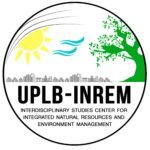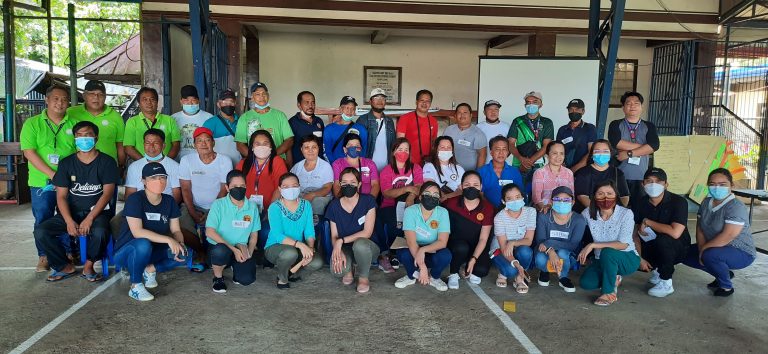The Integration of Traditional and Modern Bioproduction Systems for a Sustainable and Resilient Future Under Climate and Ecosystems Changes (ITMoB) project implemented by the Interdisciplinary Studies Center for Integrated Natural Resources and Environment Management (IdSC-INREM) in partnership with the Local Government Unit of Cavinti in Laguna, through its Municipal Agriculture Office (MAO), held a focus group discussion last April 28, 2022, at the Covered Court of Brgy. Mahipon/Lumot Hall.
The activity was attended by a total of 30 local stakeholders including farmers’ association representatives, Brgy. Captains and Brgy. Councilors for the environment committee, National Power Corporation-Caliraya-Lumot Watershed Area Team (NPC CLWAT) representatives led by Mr. Edmon Enriquez (NPC-CLWAT Section Chief), and Cavinti LGU representatives from the Municipal Agriculture Office (MAO), Municipal Planning and Development Office (MPDO), and Municipal Environment and Natural Resources Office (MENRO).
The program was opened by the Welcome Remarks delivered by Kap. Leonito Villanueva (Brgy. Captain, Brgy. Mahipon/Lumot) and Ms. Vina Orolfo (Municipal Administrator and Agriculturist, Cavinti). Both individuals expressed their gratitude for including Cavinti as one of the sites of the project and excitement in providing valuable input to the activity on hand. This is followed by a brief introduction of participants and expectation setting moderated by Asst. Prof. Kharmina Evangelista (CFNR-UPLB). Then, the project, and activity overview were presented by Dr. Catherine de Luna (CFNR-UPLB) followed by a short leveling-off regarding the fundamental definition and characteristics of bioproduction systems discussed by Dr. Lorena Sabino (CFNR-UPLB) to cap off the first part of the program.
The second part of the program is the focus group discussion (FGD) proper. The participants were divided into two groups, based on the geographic location of the barangay they represent, for a more interactive and participative discussion. Dr. Lorena Sabino led the facilitation in Group 1 while Asst. Prof. Liezl Grefalda (CFNR-UPLB) led the Group 2. The three-part FGD aimed to (1) identify problems, issues, and opportunities in relation to changes in land cover, natural resources, and ecosystem services within the watershed; (2) determine the existing and proposed solutions to the identified issues and challenges within the watershed and (3) locate mappable key bioproduction systems as identified by representatives of local government units and other related stakeholders.
Through the activity, the project team was able to list the key bioproduction systems (BPS) in all the barangays in the municipality, characterize and track the resources flow of the identified key BPS, trace the perceived changes in land cover during the past decades, draw a problem and solution tree of the main issue faced by the stakeholders, and lastly, map the location of the identified BPS in the municipality of Cavinti.
This is a follow-up face-to-face activity of a virtual stakeholders’ consultation meeting held on March 14, 2022, which served as a leveling-off activity wherein the invited participants were able to initially define, identify, and characterize key bioproduction systems in their respective areas within the Pagsanjan-Lumban Watershed. Similar activity will also be conducted in seven other municipalities within the watershed to have a complete picture of the BPS in the area which will serve as inputs to the subsequent project activities.
The FGD is the first of a series of primary data collection activities of a three-year research study funded by DOST-PCAARRD. Its project leader is Dr. Juan M. Pulhin, a UPLB professor, and NAST Academician. In general, ITMoB aims to determine which combinations of traditional bioproduction systems and modern bioproduction systems are most likely to lead to a sustainable and resilient future in the Philippines. The project has two study sites namely Pagsanjan-Lumban Watershed in Laguna and Quezon and Baroro Watershed in La Union. (Angelica T. Magpantay)

